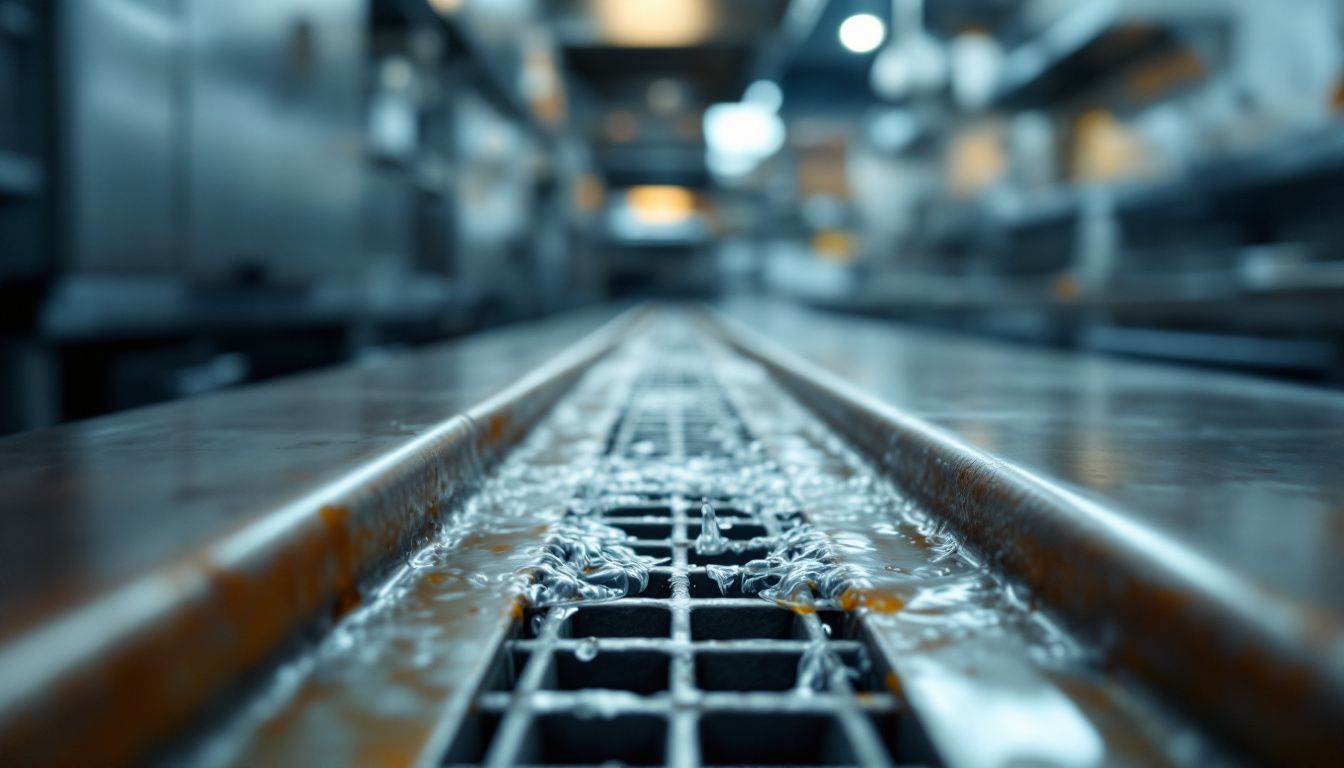
Effective water management is crucial for businesses, yet many struggle with drainage issues. Installing a trench drain is often a simple, cost-effective solution for commercial properties.
This article will help you select the perfect trench drain system and solution. Stick with us, and you’ll be on your way to solving those pesky drainage problems.
Key Takeaways
- Trench drains are long, narrow gravity channels that move water away from specific areas. They are often found in airports, schools, and warehouses.
- Key benefits of trench drains include effectively managing water, preventing water damage and erosion, and reducing slip hazards for enhanced safety.
- When selecting a trench drain system, analyze expected load and traffic, calculate necessary flow rates, choose materials for specific environmental conditions, and consider maintenance and installation ease.
- Popular materials for trench drains include polymer concrete (durable and resistant to freeze/thaw cycles), stainless steel (corrosion-resistant and ideal for food production areas), and high-density polyethylene (HDPE) (strong, flexible, and cost-effective).
- Load classes for trench drains range from A to E, with Class A supporting up to 3,337 lbs and Class E supporting up to 134,800 lbs.
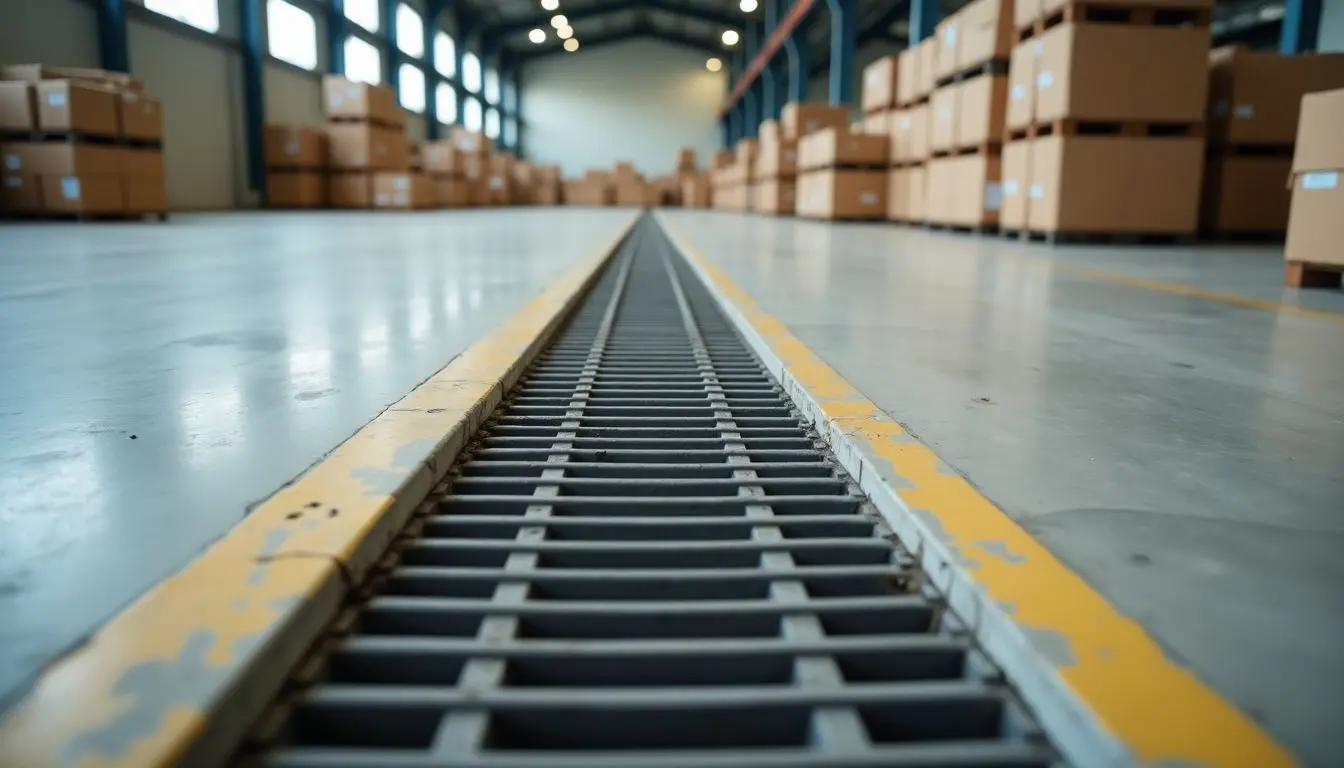
Understanding Trench Drains
After learning about the importance of proper drainage, let’s explore the trench drain channel and drains. These simple yet effective systems are long, narrow channels that collect and move water away from specific areas.
We often see them in airports, schools, and warehouses. Trench drains use gravity, with a slight slope guiding water flow. They have no moving parts, making them reliable for handling large water volumes.
Their design prevents damage to surfaces and buildings by efficiently managing excess water. We’ve found that these systems benefit many businesses, including those with epoxy and concrete floors.

Advantages of Implementing Trench Drains
Trench drains offer critical benefits for businesses. They control water flow and boost safety on your property.
Manages Water Effectively
At Extreme Industrial Coatings, we know the importance of effective water management for businesses. Trench drain systems excel at this task. They quickly move surface water away from buildings and paved areas, preventing pooling and reducing the risk of water damage.
Our systems can handle large volumes of water from heavy rains or industrial processes. They also help control chemical spills, protecting the environment and worker health.
Proper drainage is the foundation of property longevity.
Effective water management impacts more than just day-to-day operations. It safeguards property value and cuts maintenance costs. A well-designed trench drain system can protect foundations from water damage.
It also helps prevent soil erosion around structures. These systems offer a crucial line of defense against harmful runoff for businesses dealing with chemicals.

Prevents Water Damage and Erosion
Trench drains are vital for protecting our properties from water damage and erosion. These top drainage systems redirect excess water away from buildings and landscapes, safeguarding foundations and soil integrity.
By channeling runoff efficiently, trench drains prevent pooling that can lead to structural issues or landscaping problems. Our concrete trench drains offer robust protection against the harmful effects of water accumulation, ensuring your commercial property stays dry and stable.
Extreme Industrial Coatings knows how effective drainage solutions can make a big difference in maintaining paved surfaces and parking lots. Proper installation of a trench drain system helps manage water runoff, reducing the risk of soil erosion around your property.
This proactive approach to water management keeps your business environment safe and well-maintained, even during heavy rainfall or in areas prone to flooding.
Reduces Slip Hazards for Enhanced Safety
We know safety is a top concern for businesses. Trench drains play a crucial role in reducing slip hazards. They remove standing water quickly, reducing wet floors and making indoor and outdoor spaces safer.
We’ve seen how these systems prevent accidents and keep people on their feet.
Our clients love trench drains’ added safety features. Anti-slip covers offer extra grip, even in wet conditions. By managing water and flow rate, these drains prevent puddles from forming.
This reduces slip risks and keeps your business running smoothly. It’s a simple way to boost safety and protect staff and customers.
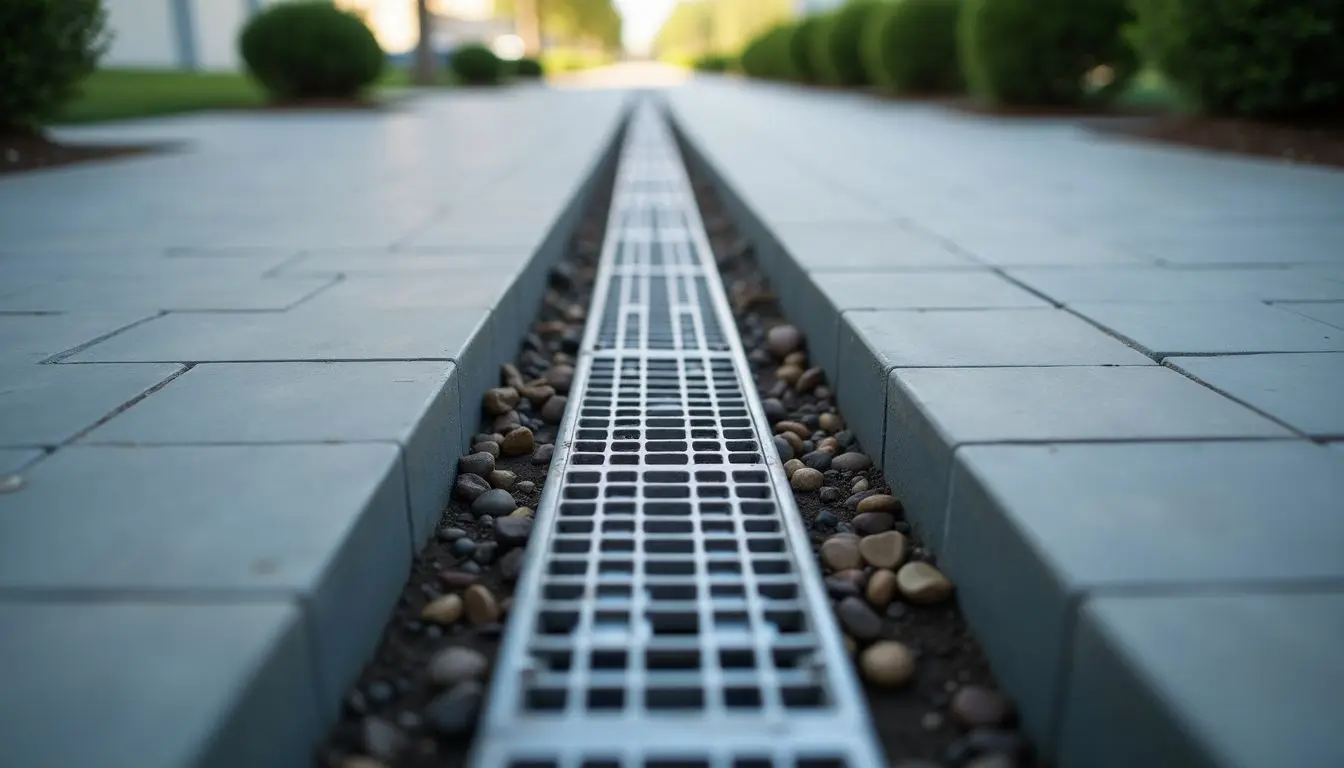
Tips for Selecting the Ideal Trench Drain System
Extreme Industrial Coatings offers vital tips to help you pick the perfect trench drain system. Learn how to choose the right trench drain well for your business.
Analyze Expected Load and Traffic
We must analyze the expected load and traffic for your trench drain system. This step is crucial to ensure the system can handle the weight it will face. Load classes range from A to E, each supporting different weights.
Class A can hold up to 3,337 lbs, while Class E can support how much weight a massive 134,800 kg. A higher load class is vital for businesses with heavy vehicle traffic, like loading docks. We need to consider foot traffic too.
The right choice will prevent damage and ensure long-lasting performance.
Traffic type also affects the drain’s width, which varies from 4″ to 14″. More expansive drains suit areas with high water flow or heavy rainfall, while narrower options work well for lighter loads and less water.
Extreme Industrial Coatings can create an efficient water management system by matching the drain to your needs. This approach helps prevent issues like slow drainage and water damage, keeping your business running smoothly.
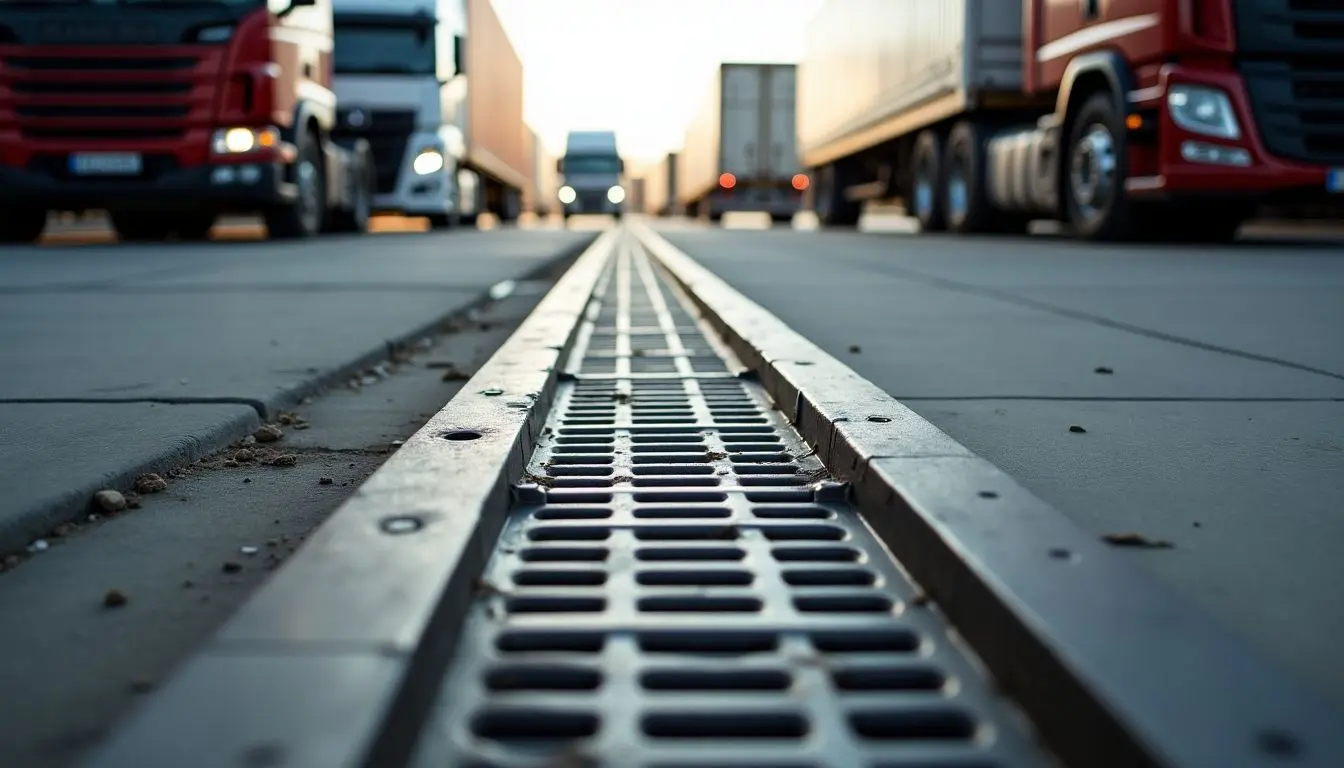
Calculate Necessary Flow Rates
After assessing load and traffic on slot drains, we move on to flow rates. This step is vital for a well-working trench drain. We need to figure out how much water the drain must handle. To do this, we look at the amount of rain that could fall, the area it covers, and how much runs off.
Our team uses Manning’s equation to work this out. We make sure the drain can take all the water that comes its way. The drainage channel’s slope, size, and what it’s made of all play a part.
Getting these numbers right means your drain won’t flood or fail when you need it most.

Choose Materials for Specific Environmental Conditions
We must pick suitable materials for our trench drains based on the environment. Different settings need different trench drain installation types. For heavy loads, polymer concrete works best. It’s strong and can handle big trucks or machinery.
Stainless steel is a top choice for places with extreme heat or cold. It doesn’t warp or crack in harsh weather.
For areas with chemicals, we recommend HDPE drains. They resist corrosion and don’t break down quickly. HDPE is also budget-friendly for many businesses. Each material has strengths, so we match them to your needs.
This ensures your drain system lasts longer and performs better.
Consider Maintenance and Installation Ease
Maintenance and installation ease are critical factors in choosing and installing a trench drain system. We recommend picking a design that’s simple to clean and repair. Removable grates allow easy access for cleaning and unclogging.
Some systems have self-cleaning features, which reduce maintenance time. We suggest looking at systems that don’t require special tools or skills for installation. This can cut down on labor costs and time.
Next, let’s explore the popular materials used in trench drains.
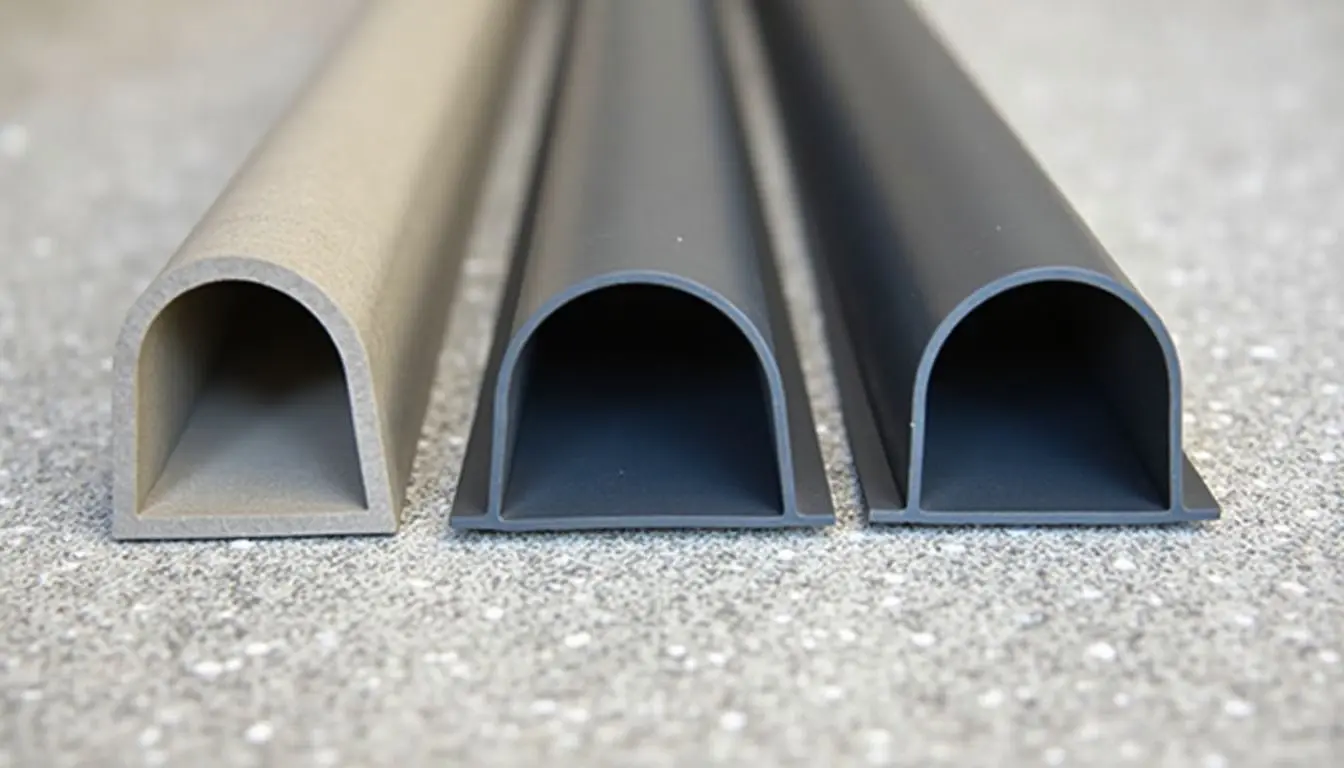
Popular Materials for Trench Drains
Trench drain materials play a crucial role in system performance. We’ll explore three popular options: polymer concrete, stainless steel, and high-density polyethylene (HDPE).
Polymer Concrete Features
Extreme Industrial Coatings offers excellent features and polymer concrete drains. These drains have low permeability and high durability, making them ideal for many uses. They resist freeze/thaw cycles and cure quickly, making them perfect for time-sensitive projects like roadways and loading docks.
Our polymer concrete can handle temperatures up to 180°F and absorbs very little water. This material is great for businesses needing harsh, long-lasting drainage solutions.
Benefits of Stainless Steel
Moving from polymer concrete drains, let’s explore stainless steel’s strengths. Stainless steel trench drains excel in food production areas, and their corrosion resistance keeps them strong against harsh chemicals.
This quality makes cleaning and upkeep simple, boosting overall sanitation.
Our stainless steel systems protect groundwater and stop bacteria growth. They also withstand caustic runoff that might harm other drains. For businesses dealing with tricky liquids, stainless steel offers a durable, long-lasting drainage solution.
High-Density Polyethylene (HDPE) Uses
We often recommend HDPE for commercial trench drains and drainage due to its durability and flexibility. Its cost-effectiveness also makes it a smart choice for businesses. HDPE’s impermeability suits high-pressure pipelines and standard trenching for water and sewer systems.
This quality helps prevent leaks and maintain system integrity over time.

Conclusion
Selecting the appropriate trench drain system is crucial for your business. We’ve discussed essential factors, including load capacity and materials. However, it’s also necessary to evaluate your specific requirements and environment.
A well-selected drainage system will safeguard your property and improve safety. Armed with this information, you’re prepared to make a knowledgeable choice for your drainage needs.
Extreme Industrial Coatings is here to help you.
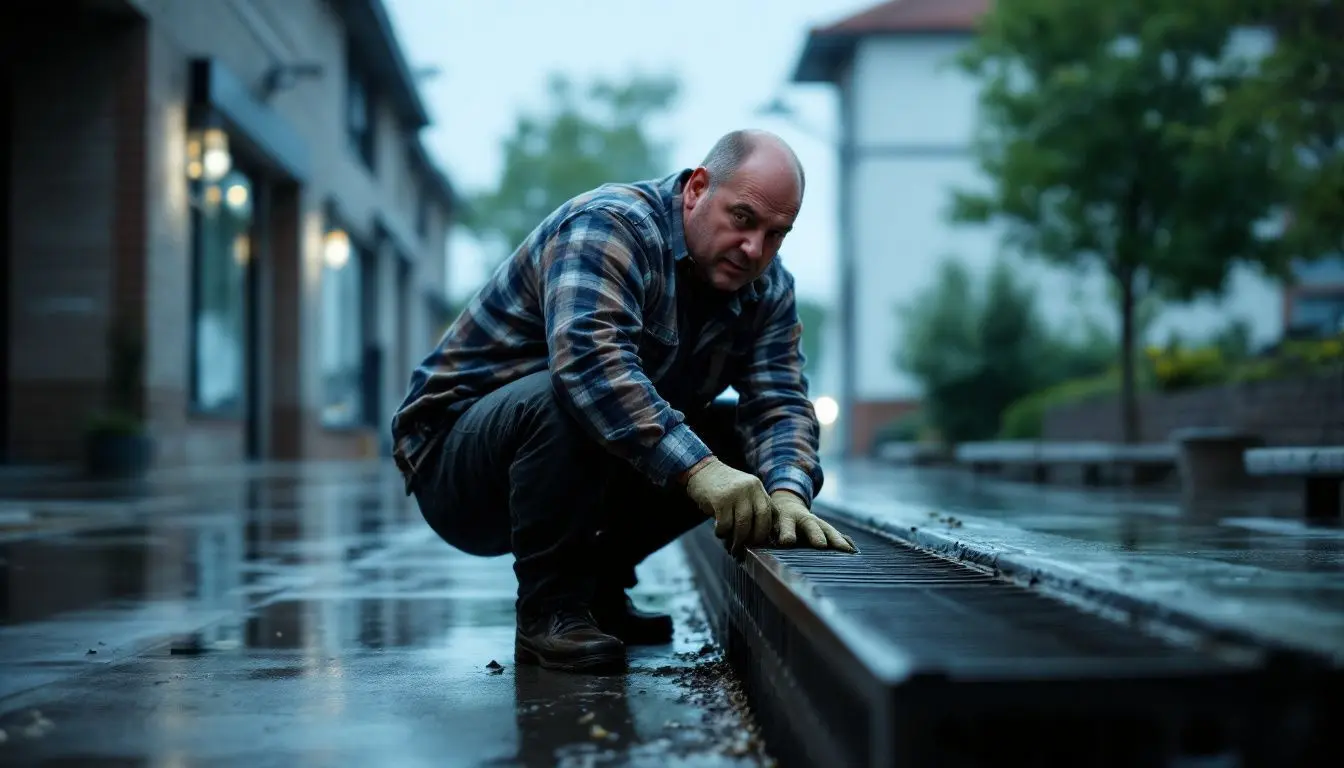
FAQs
Contact Extreme Industrial Coatings today for 20+ commercial construction services we offer across California.


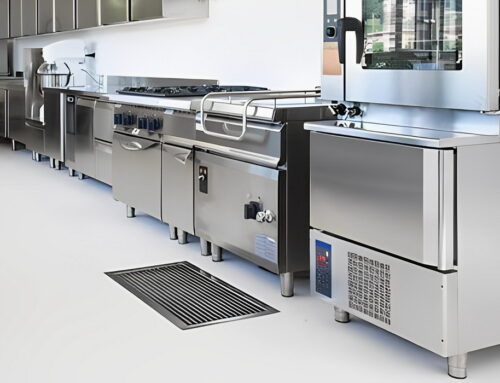
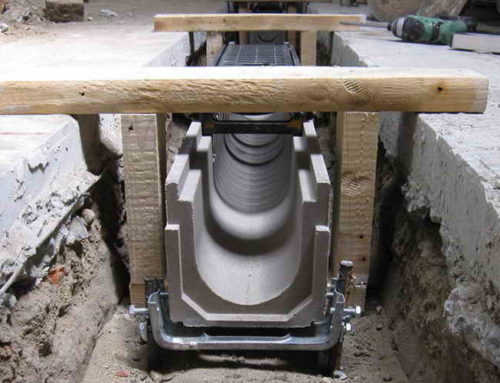
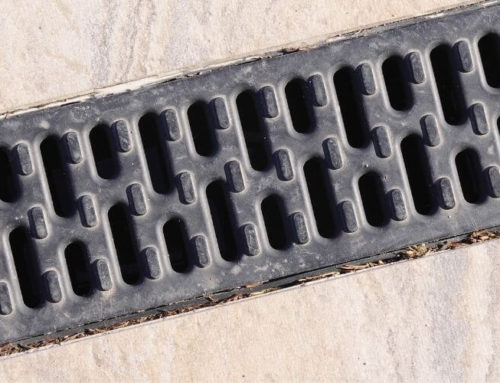
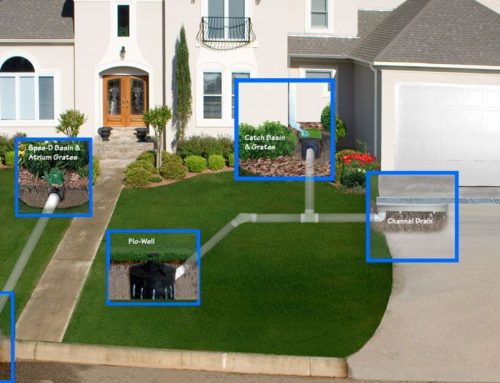
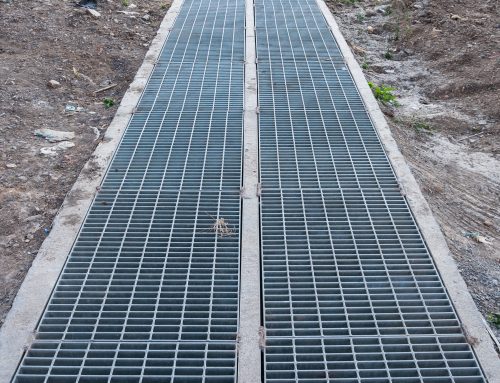
Leave A Comment